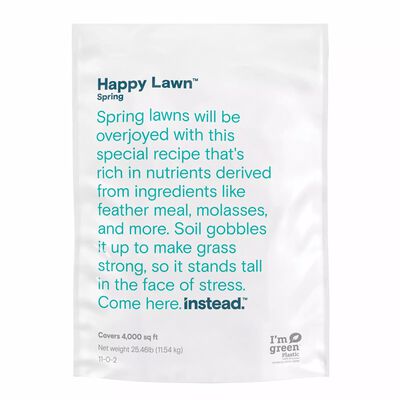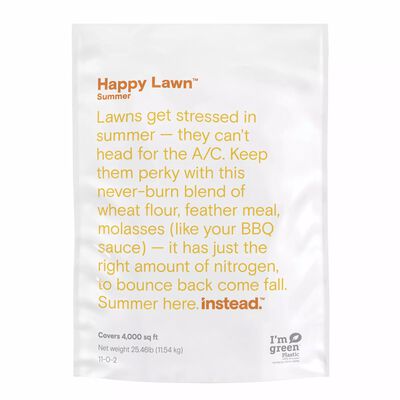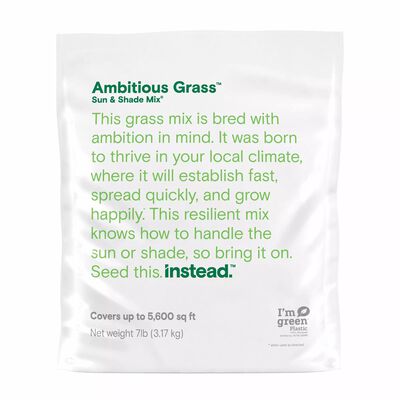
Make Your Own Natural Weed Killer
A DIY recipe for anyone who doesn't hate weeds,
In the words of Ralph Waldo Emerson, weeds are simply plants "whose virtues have not yet been discovered." They are, in fact, part of our natural environment and deserve to exist. That said, you don't really want weeds popping up in your lawn—we get it. The good news is, you can have your green grass and keep it natural, too. Proper lawn care and a vinegar-based weed killer can do just the trick.
Learn how to have the best of both worlds with our DIY recipe for a natural spray and tips for keeping your lawn weed-free in the first place. Prevention is key!
Natural Weed Killer Recipe
You can prevent a majority of weeds from popping up in the first place by following a dedicated lawn care regimen. However, some are more persistent than others, so if you still need to zap a pesky weed or two, use this handy recipe.
Ingredients
1 gallon white vinegar*
1 cup salt
1 T. dish soap
* If you want to really ramp it up, opt for herbicidal vinegar—it's much stronger.
Directions
Thoroughly mix all ingredients together and store them in a covered container inside. When you're ready to apply, simply add some to a spray bottle. But, before you head outside to show those weeds who's the boss, be sure to read on for more directions and safety tips.
How to Apply Weed Killer
You'd think applying natural weed killer would be as easy as "grab the spray bottle and go outside," but there's a little more to it than that in order to get the best results (and that's what we're after here). Commercial weed killers get down to the roots of a weed and kill at that level, whereas natural weed killers do their job from the top down. This means you'll likely have to reapply your DIY mix more often to get the desired results. We think it's worth it.
Pro Tips
- Apply during the sunniest part of the day. The sun/heat will help your DIY weed killer dry out and kill those weeds.
- Apply during dry weather. Rainfall or lawn irrigation waters down the solution, so plan to apply when it's dry outside.
- Aim to get ‘em young. Young weeds with just 2-5 leaves are much easier to get rid of than older weeds, which require additional applications. The recipe in this article is best used on very young weeds, while the herbicidal vinegar is best for mature ones.
- Get up close and personal. Spray the entire plant and all its leaves.
- Reapply as necessary. You should begin to see the effect within a few hours, but you'll need to reapply over the next few days to make sure your weeds are goners.
Safety Tips
- Clearly label the storage container and spray bottle you're using.
- Avoid spraying on nearby grass or plants that you actually want — any weed killer will go to town on whatever it's sprayed on.
- Use gloves when applying.
- If you're using herbicidal vinegar (over 11% acetic acid), read the safety information on the label. Misusing it can burn your skin or eyes.
- Other DIY weed killer recipes can include boiling water, borax, baking soda, or bleach. Use these common household ingredients safely to avoid injury to yourself or to the environment.
- Never use herbicidal vinegar in the kitchen! Herbicidal vinegar is for agricultural use only.
Proactive Weed Prevention
If you really want to up your natural lawn care game so that DIY weed killers like this one are less necessary, start with prevention. Taking good care of your lawn regularly leads to an overall healthier lawn, which makes it much more difficult for weeds and disease to creep in. While you'll want to customize your lawn care routine to the type of grass you have and your current weather patterns, raise your right hand (or left, we're not picky), and solemnly swear to uphold the Lawn Care Laws.
Mow at the Right Height
In general, your grass should be 2 to 3 inches high, and you should only remove about one-third of the overall grass height in any single mowing. If summer vacation calls and you return home to a lawn that looks more like a prairie, do not give it a buzzcut. This will stress out your grass, which is never good. The exception? Bermudagrass and zoysia grass can be mowed to 1 inch, and tall fescue and Kentucky bluegrass can be kept a little higher at 3 to 4 inches.
Fertilize at the Right Time
There are 4 times a the year when you should fertilize your lawn: Early spring, late spring, summer, and fall. These applications are timed to give your lawn the proper amount of food at each stage of its seasonal growth. Grass that's lacking nutrients behaves kind of like humans—it gets worn out quickly. Eventually, your lawn just gives up and lets the weeds take over because it's feeling too weak to put up a fuss.
Water Smarter, Not Harder
Any lawn geek will tell you: The general rule of thumb is to water your lawn less frequently but more deeply. Unless you are overseeding or reseeding your lawn, you don't need to water every day. Most lawns appreciate 1 inch each week, and if it's recently rained, it's safe to assume your grass just isn't that thirsty.
Pull Weeds by Hand
Don't wait for weeds to take over! Cruise your lawn regularly to spot-check for weed stowaways, and pull them out by hand before they work their way across your yard. If you're new to keeping things natural, take note: Do not toss weeds onto your compost. Bag them up as yard waste and wave them goodbye!
Practice good lawn care and unsightly weeds will become a distant memory. But, if some pop back into your line of vision, having your own natural weed killer on hand is key.


